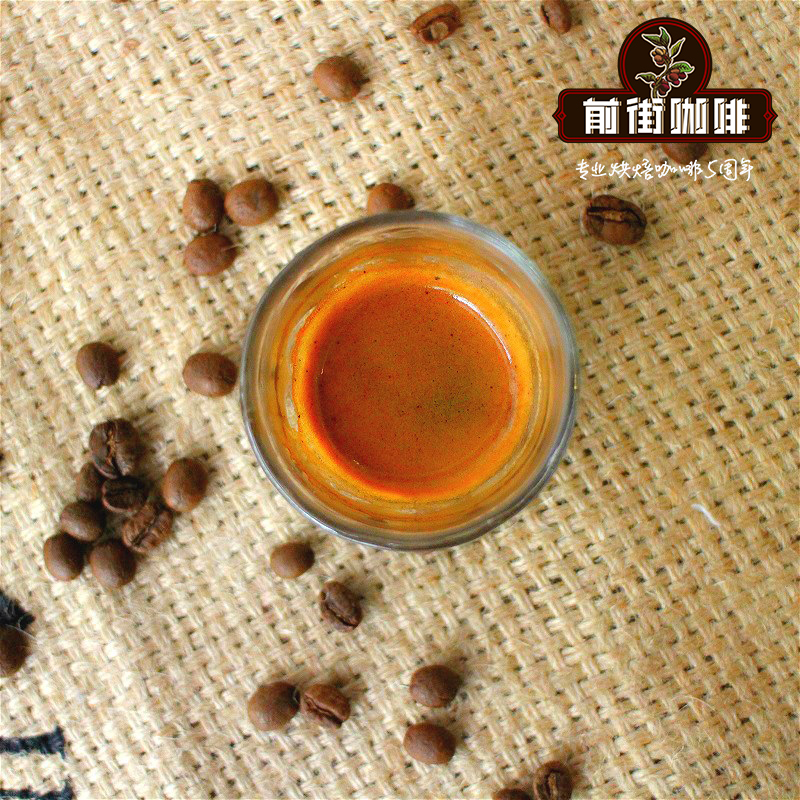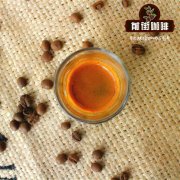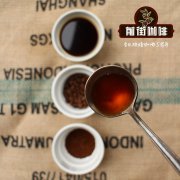Misunderstanding in the method of brewing espresso-blindly conforming to the standard there is no standard for making espresso.

Professional coffee knowledge exchange more coffee bean information please follow the coffee workshop (Wechat official account cafe_style)
I figured it out! The same 18 grams of coffee powder takes 15 or 30 seconds to make one or two cups of coffee. The reason why they taste different is the thickness! "
After weeks of thinking, the guest finally figured out the "answer". Anyone who knows a little about espresso knows that adjusting the amount and thickness of powder is the basic law to control the flow rate. What he found is not only the standard complementary relationship of "adding powder when grinding thick, and reducing powder after grinding fine", but also realizing the effect of adjusting the two on taste.
The understanding and pursuit of contemporary espresso (Contemporary espresso) in the industry has jumped out of the traditional framework. Typical espresso, which emphasizes strong taste, oily taste and bitter taste, is often mixed with commercial grade Robusta beans with high caffeine content and deeply roasted. What the boutique tide advocates is the fresh extraction of 100% Arabica varieties, emphasizing rich layers and a balance of sour and bitterness. Once Cafe Sant'Eustacio, a famous coffee shop in Rome, asked the clerk how long the beans had been fried on the shelves. He asked, like an alien, "how long is it a question?" In short, we cook coffee portions according to traditional standards! "
It has been mentioned earlier that espresso is defined in terms of "time and capacity" (about 30 ml in 30 seconds) and "powder and capacity" (27.7 grams of liquid made from 18 grams of powder). But in fact, coffee cakes experience high pressure and high temperature in tens of seconds, and what happens under the microscope is far beyond what can be seen with the naked eye.
Coffee liquid is made by washing coffee powder with hot water. These include gases, water-soluble substances, and non-aqueous substances such as coffee oil. The volume and resistance of coffee cakes will change with the extraction process; for example, the release of gas will increase the resistance of pressed powder, but on the other side, when dissolved by hot water rinsing, the distance between powder particles will widen and the resistance will be reduced. In addition, the fine powder will accumulate as water flows from the top to the bottom of the cake, resulting in an increase in lower resistance. Simply repeating the combination of time and capacity is not enough to replicate coffee with the same taste.
Coffee cake cracks affect the taste
To make good espresso, the first thing to guard against (Channeling): if there are cracks in an 18-gram coffee cake, according to the inertia of the water, it will flow away from the place with the lowest resistance. So the coffee powder on both sides of the crack will be overextracted after a certain period of time, but the rest of the cake may not be wet through at all and become underextracted. Therefore, although 27.7 grams of "standard coffee" are made from 18 grams of coffee powder, if there are cracks in the cake, less than half of the coffee may actually be used for brewing. In particular, the part of the crack that tastes bad becomes bitter due to excessive extraction. Therefore, the purpose of opening the handle with the naked eye is to "let it taste what should be tasted, and stop when it is enough, regardless of whether it reaches the standard or not."
If Espresso is an acid (A) bitter (B) balanced drink, then the Ristretto with shorter extraction time is mainly acid (A), because the fruit acid has high water solubility and will be extracted first. On the contrary, excessive extraction is characterized by a taste similar to peanut ash (C). The ideal Espresso is only A B, but in fact, a small amount of C is inevitable. Rristretto can be processed with the same thickness but for a short time to avoid the emergence of B; another method is to extract the thicker powder with a longer time. Local enthusiasts who are at the forefront have adopted this method to define espresso: even if it is only 20 milliliters, there is an Aspira B, which we call Espresso profile. Is there an A, a C and a large cup? That is the Rristretto that failed to extract.
It is more interesting to follow the sense of taste than to blindly conform to standards.
Important Notice :
前街咖啡 FrontStreet Coffee has moved to new addredd:
FrontStreet Coffee Address: 315,Donghua East Road,GuangZhou
Tel:020 38364473
- Prev

Misunderstanding in the method of brewing espresso-blindly conforming to the standard there is no standard for making espresso.
Professional coffee knowledge exchange more coffee bean information please follow the coffee workshop (Wechat official account cafe_style) I have figured it out! The same 18 grams of coffee powder takes 15 or 30 seconds to make one or two cups of coffee. The reason why they taste different is the thickness! After weeks of thinking, the guest finally figured out the answer. Anyone who knows anything about espresso knows it.
- Next

Coffee roasting: what does coffee roasting mean? how do professional roasting cafes bake coffee?
Professional coffee knowledge exchange more coffee bean information please follow the coffee workshop (Wechat official account cafe_style) from the origin to the pot cup, the intermediary point most related to the smell of coffee in the journey is roasting. We plant coffee trees in the tropics, condensing the abundant equatorial sunlight into coffee beans, and then through the baking process, the grass-flavored wood is baked into caramel sweetness, milk and oil.
Related
- Beginners will see the "Coffee pull flower" guide!
- What is the difference between ice blog purified milk and ordinary milk coffee?
- Why is the Philippines the largest producer of crops in Liberia?
- For coffee extraction, should the fine powder be retained?
- How does extracted espresso fill pressed powder? How much strength does it take to press the powder?
- How to make jasmine cold extract coffee? Is the jasmine + latte good?
- Will this little toy really make the coffee taste better? How does Lily Drip affect coffee extraction?
- Will the action of slapping the filter cup also affect coffee extraction?
- What's the difference between powder-to-water ratio and powder-to-liquid ratio?
- What is the Ethiopian local species? What does it have to do with Heirloom native species?

